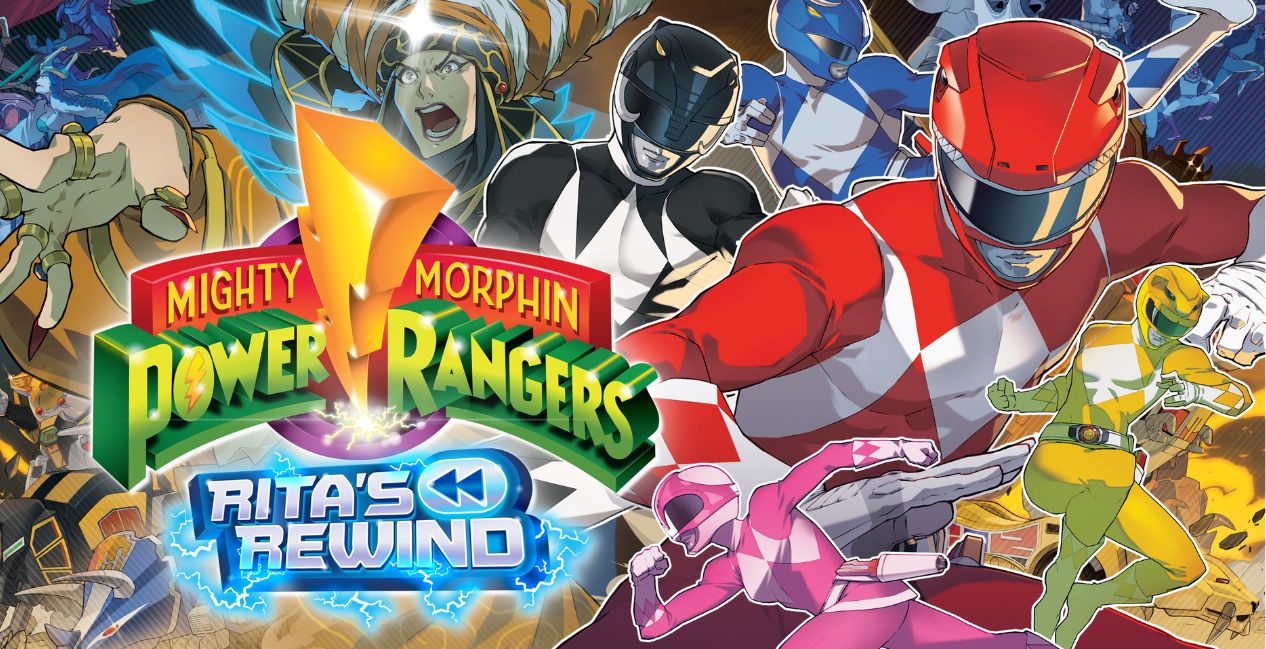In a world where nostalgia is often used as a marketing ploy, Mighty Morphin Power Rangers: Rita’s Rewind stands out by being more than a simple homage. Digital Eclipse invited us to play through the game’s first two episodes, and it is clear this is something special. The game captures the heart of what makes Power Rangers so beloved while delivering a satisfying arcade experience. It’s not just a “love letter to the fans;” it’s an invitation for both new and old players to rediscover the thrill of working together to defeat evil.
A Simple Story with Timeless Appeal
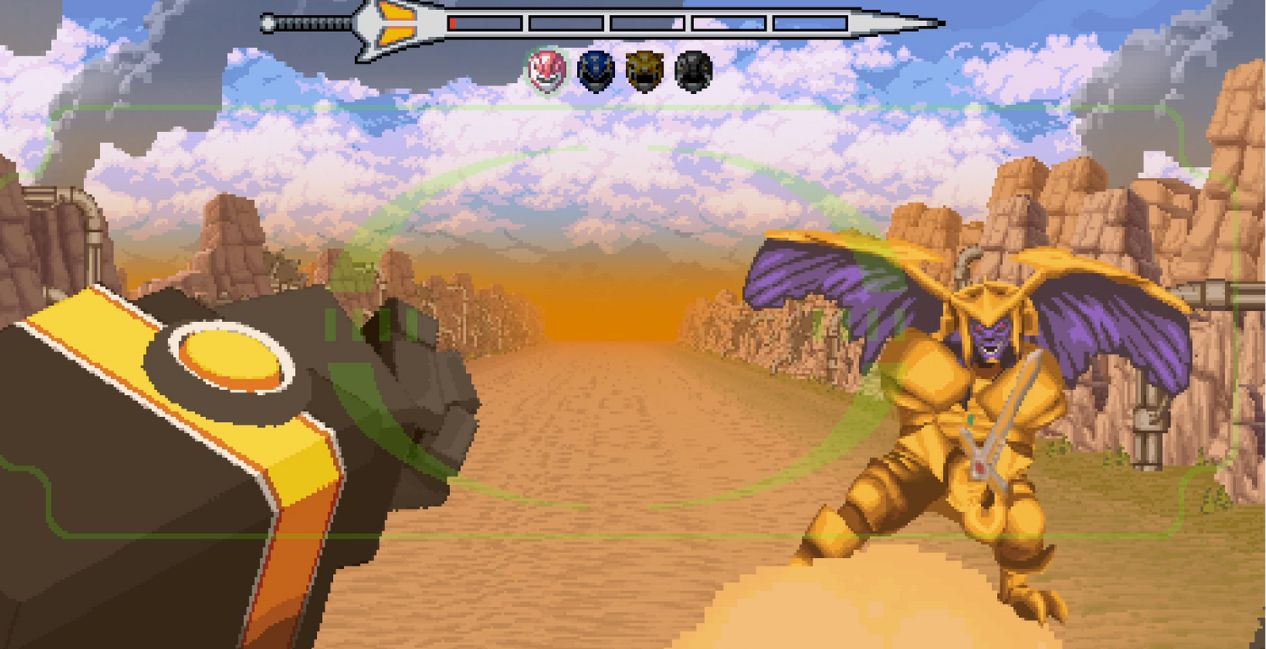
The setup is refreshingly straightforward: Robo-Rita, a futuristic version of the Power Rangers’ original nemesis, has traveled back from 2023 to rewrite history. The current Rangers stay behind to avoid time paradoxes, leaving the original team—Trini, Jason, Kimberly, Zack, and Billy—to take on this resurrected threat. It’s a classic Power Rangers premise, but bringing in an older, reimagined villain feels fresh, bringing a new level of excitement to the story.
This setup perfectly taps into why Power Rangers has been able to transcend generations. The Rangers themselves are more than just heroes; they represent a set of ideals—unity, bravery, and selflessness—that resonate no matter the era. The Rangers of 2023 are unwilling to chase Robo-Rita into the past because they trust the Rangers of the past to get the job done. Whether it’s 1993 or 2023, the core message is the same: these teenagers, suited or not, are defined by their courage and compassion.
It’s a beautiful tribute that elevates the franchise’s core values without relying on nostalgia. In Rita’s Rewind, this timeless message shines through, reminding players of the power of trust, teamwork, and the belief that good can triumph over evil no matter the odds.
Episodes, Not Levels – An Arcade-Style Storytelling Experience
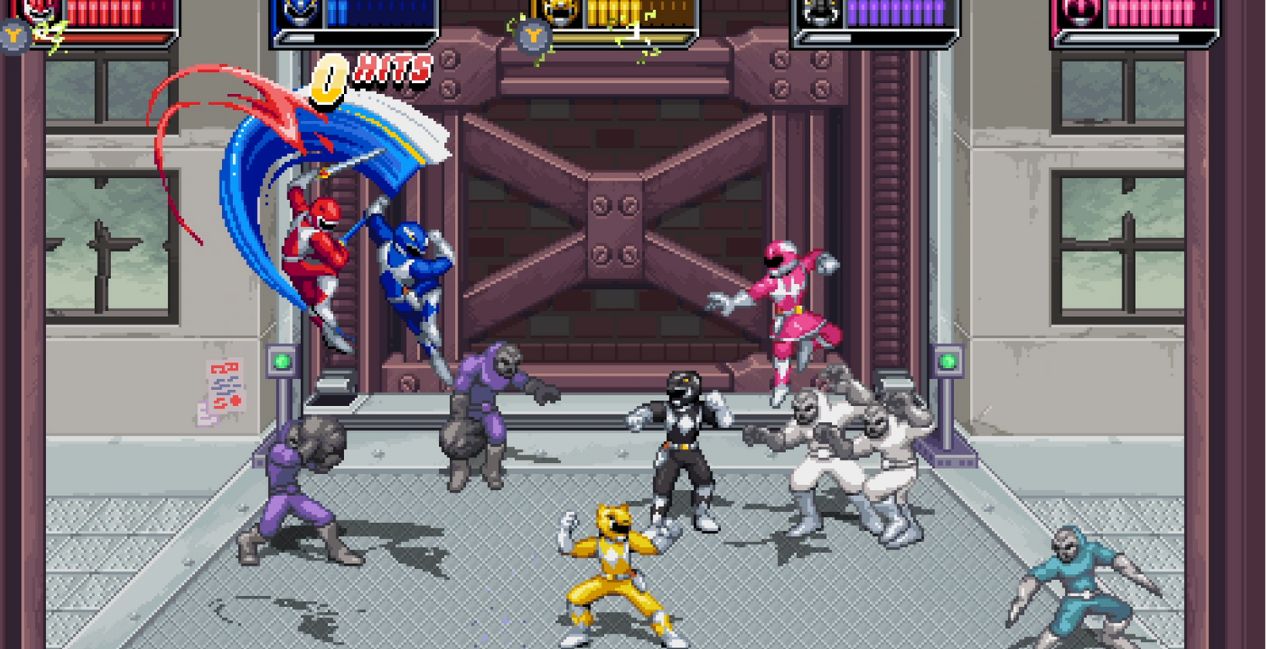
In Rita’s Rewind, gameplay is structured as “episodes” rather than traditional levels. This framing turns each stage into an unfolding storyline, immersing players in a way that feels closer to experiencing a live Power Rangers episode than simply clearing levels. It’s an innovative touch that enhances immersion, creating a feeling that you’re actually participating in the Power Rangers saga.
This episodic format also allows the game to pull from various classic arcade genres, creating a full retro experience. While the brawler mechanics are central, you’ll also encounter segments referencing super scalers, vehicular chases, and even piloting the iconic Dinozords and Megazord. It’s more than just “punch, punch, punch”; the game continuously changes up the action, keeping players engaged and offering an experience that feels like a retro arcade game in the best way possible.
Attention to Detail – Sprites with Personality
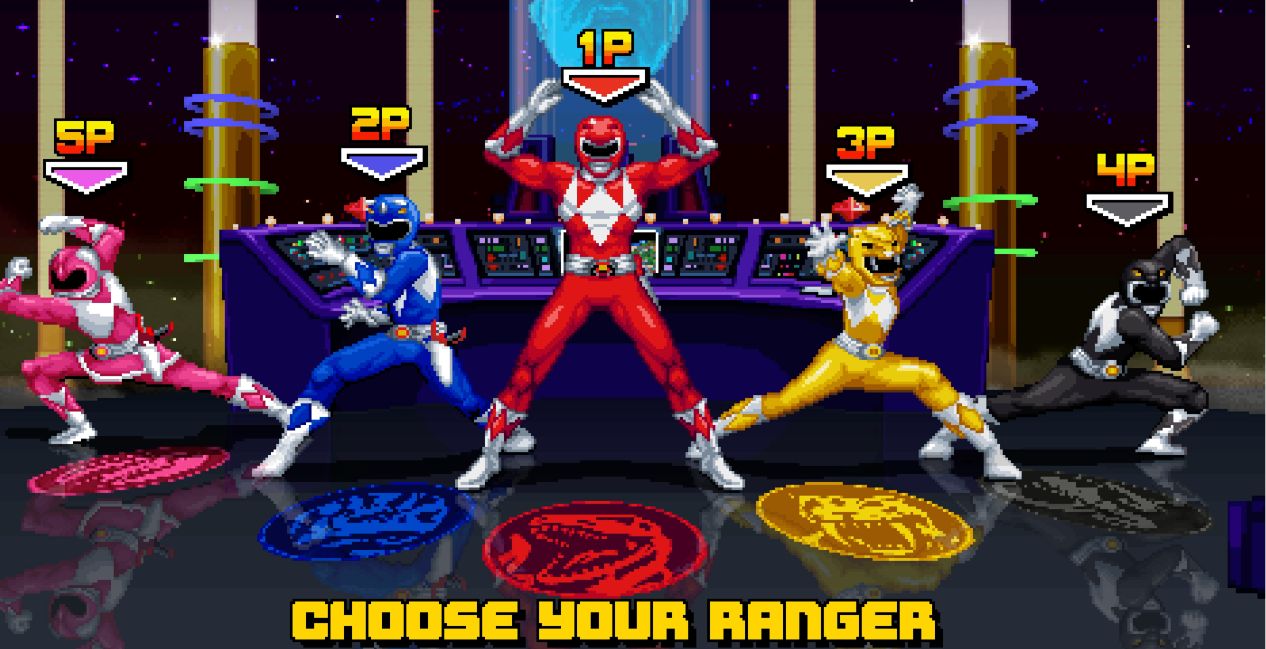
One of the elements that stuck with me the most in Rita’s Rewind is the attention to character detail, especially in the sprites. Each Ranger has an animation in a way that captures their unique personality while paying homage to the actors who originally brought these characters to life. Kimberly’s moves reflect her ballet-inspired grace, while Zack’s sprite pays homage to his hip-hop martial arts style with a subtle Bruce Lee-esque bounce. And then there’s Trini, the Yellow Ranger. Seeing her likeness faithfully preserved is deeply moving, especially knowing that actress Thuy Trang is no longer with us. This sprite is more than a character—it’s a tribute to her legacy and the impact she made on so many fans.
The Red Ranger, Jason, is unmistakably Austin St. John. His powerful movements and confident stance recall the original team leader fans know and love. This isn’t just any group of Power Rangers—it’s the original team, the one that started it all. From the design of their suits to their unique animations, the sprites ground players in the nostalgia of Mighty Morphin Power Rangers, reminding us why this team remains iconic decades later.
This detail means that picking a Ranger isn’t just about choosing a color; it’s about selecting a personality and reconnecting with the actors and characters who brought them to life. Every move feels true to the character, making it a joy to play as your favorite Ranger and appreciate each team member’s uniqueness. These details, paired with expressive animations and faithful character designs, contribute to the game’s authenticity, creating a strong connection between players and the original show.
Accessibility and the Retro Experience
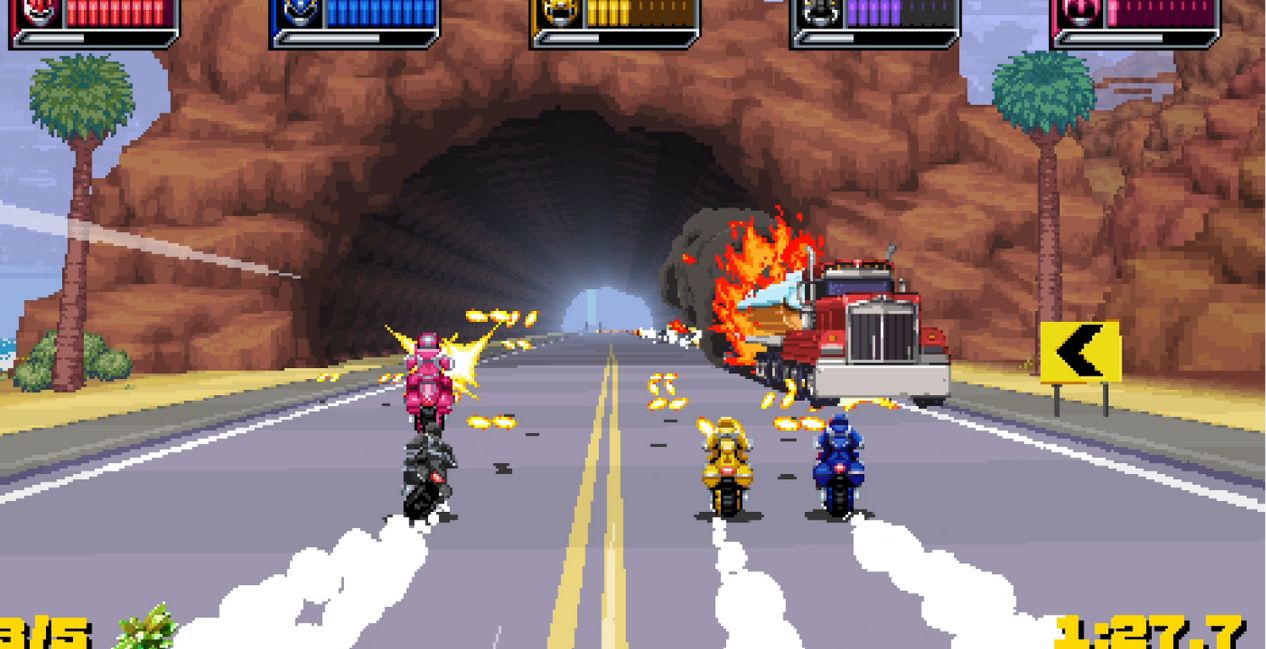
The developers clearly wanted Rita’s Rewind to feel like a true retro experience, but there’s one area where accessibility could improve. As a player with colorblindness, I found it challenging at times to distinguish between the Red and Black Rangers, especially during fast-paced moments or non-brawler sections. While the game doesn’t currently have a colorblind mode, I suggested adding player markers as an accessibility option, which the developers seemed open to exploring. It’s a small tweak that could make a big difference, particularly in co-op play.
That said, Rita’s Rewind does include a thoughtful tutorial that sets players up for success, even if they’re unfamiliar with arcade-style games. The game introduces the baseline controls you’d expect from a traditional arcade brawler, with minimal button controls. It’s a smart addition that modernizes the experience without compromising its retro feel. Instead of throwing players straight into the action, as you’d often experience in an actual arcade cabinet, the tutorial offers a brief yet helpful orientation. This ensures that even players picking up this genre for the first time can feel capable and confident, elevating the accessibility and fun for everyone.
On the flip side, Rita’s Rewind nails the retro vibe with a range of CRT-style display options. Players can switch between different “retro” filters, which simulate the slightly fuzzy look of classic CRT monitors, creating an immersive 90s feel. But the best part? Even with these filters, the visuals remain sharp and functional, making the game accessible for those who want a retro look without sacrificing modern clarity. It’s a perfect example of how to incorporate retro design while maintaining a smooth, polished experience.
Fun in a Power Rangers Way – The Spirit of Co-op
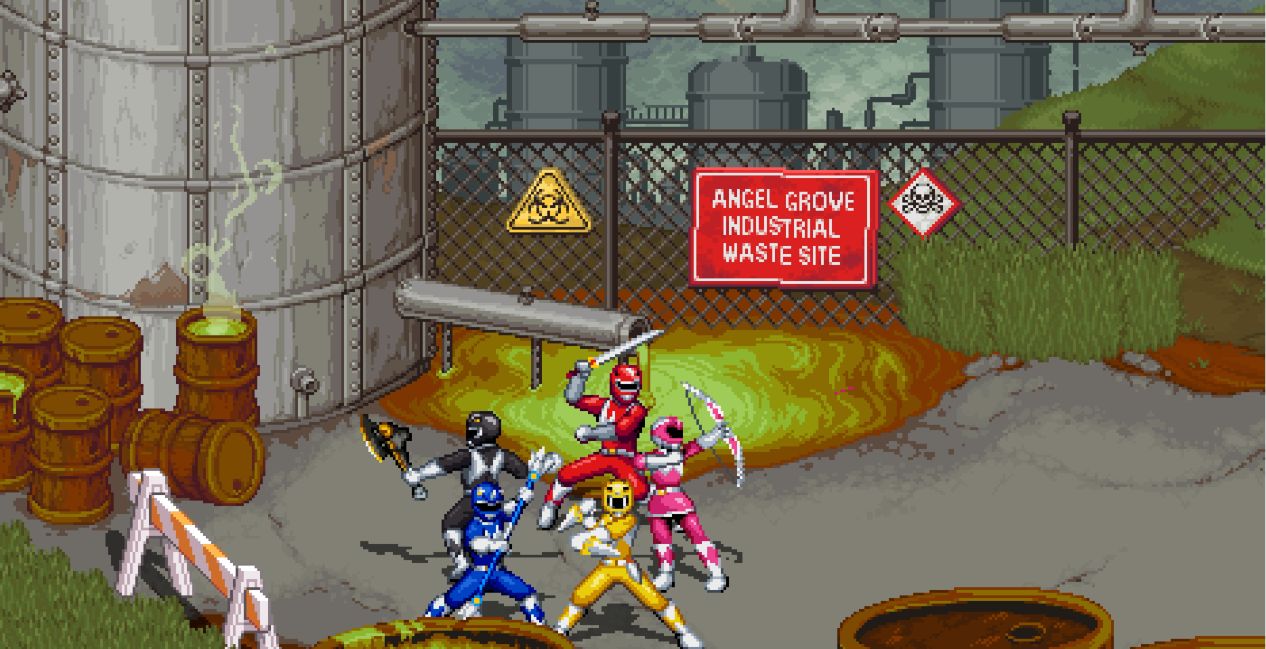
Co-op gaming is central to the Power Rangers experience, and Rita’s Rewind embraces this wholeheartedly. Unlike competitive games that pit players against each other, Rita’s Rewind focuses on collaborative gameplay, especially in the Megazord battles. Instead of giving each player control of a specific part (which could have become chaotic), the game rotates control, allowing each player a turn to strategize, attack, and learn the boss’s moves. It’s a design choice that turns what could have been a frustrating moment into an engaging one, letting players learn from each other and share in the triumphs and challenges of each fight.
The dialogue and voice acting also deserve recognition. Lines like “We got this!” channel the campy encouragement Power Rangers is known for, but they’re delivered in a way that feels uplifting rather than outdated. These moments harken back to a time when positivity wasn’t seen as cringe-worthy, instead reminding players of the simple, genuine joy of teamwork. Even smaller, more vulnerable lines like “Sorry guys, I tried” bring a sense of humanity and relatability to the Rangers, grounding them as normal teenagers facing extraordinary challenges. This writing makes the experience feel authentic, reinforcing the cooperative spirit of the game.
The rotating Megazord control gives everyone a shot at contributing and feels more like a unified team effort than traditional multiplayer. The game’s difficulty settings are forgiving enough that even new players can participate without feeling left out, making it fun for everyone, from seasoned gamers to those new to arcade brawlers. My favorite moment was when the player who had struggled the most during the Megazord fight managed to deliver the final blow, bringing our group together in a cheer. These moments make Rita’s Rewind special. It’s about teamwork, encouragement, and sharing in the victory.
A Soundtrack That Captures the Heart of Power Rangers
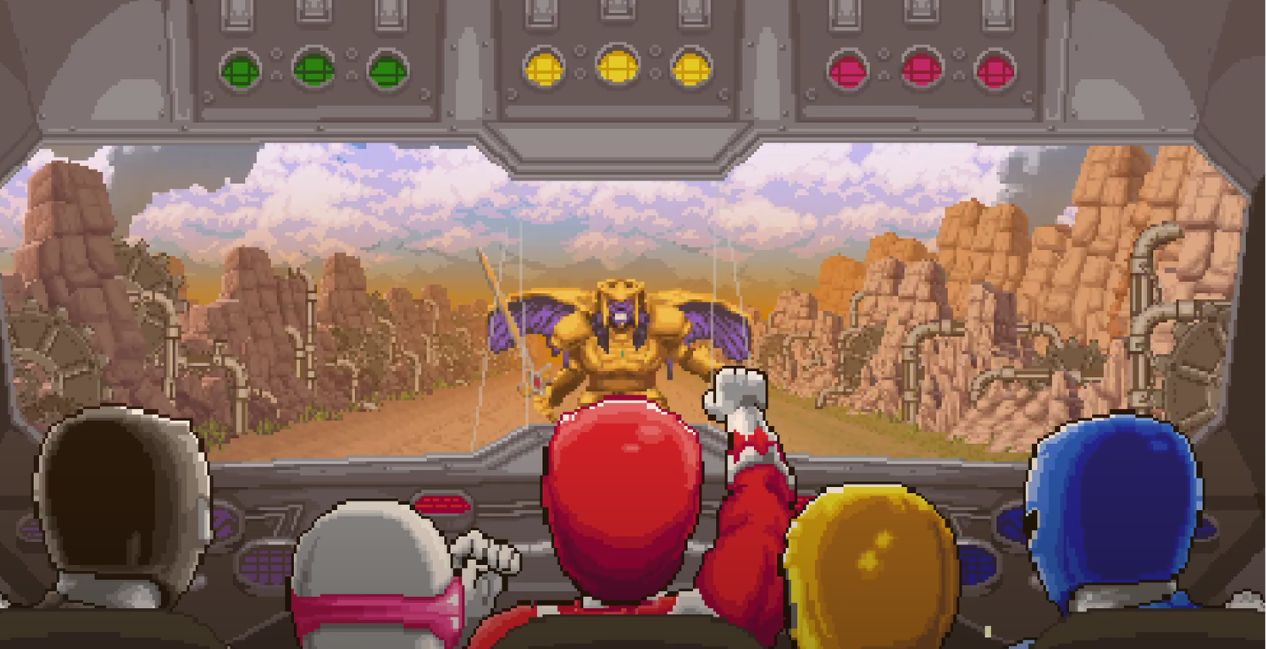
One thing that can’t be overlooked in Rita’s Rewind is the music. For Power Rangers fans, the soundtrack is as iconic as the suits or the Zords. From the unforgettable Mighty Morphin Power Rangers theme song to the sounds that signal it’s time to morph or the beeps from the communicators, music and sound effects are essential to the Power Rangers experience.
Composer Sean Bialo brings these sounds to life with tracks that amp up the action and pull you back to that place of excitement, whether you’re a lifelong fan or entirely new to the franchise. The soundtrack includes face-melting, adrenaline-pumping riffs that keep you in the zone, powering you through each battle or celebrating after a hard-won victory. The music isn’t just background noise. It’s an experience connecting players with the larger-than-life spirit of Power Rangers.
The Hub – A Nostalgic Anchor
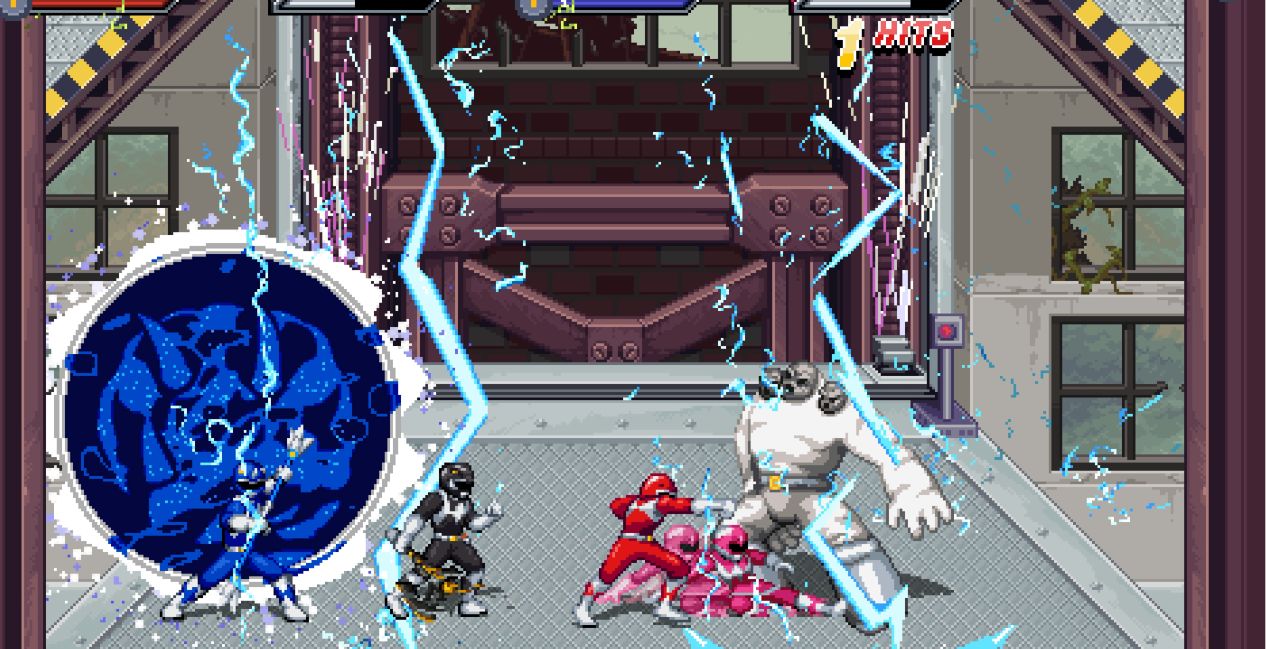
Between episodes, players can explore a hub styled after the juice bar from the original show. This setting is more than just a functional space- it’s a nostalgic callback to where the Power Rangers would gather at the start and end of their adventures. For longtime fans, this juice bar is iconic, often overlooked in past video game adaptations despite being central to the series. It reminds us that, as Alpha 5 would put it, “At the end of the day, these are just TEEENAGEERRRSSSS!”
The juice bar serves as a comforting, familiar space where players can encounter characters they’ve saved during episodes, adding a sense of continuity and connection. It’s also a reminder that the Power Rangers weren’t just heroes in suits – they were teenagers balancing normal lives with saving the world. This space grounds the action, reinforcing the idea that these larger-than-life heroes were relatable, everyday people at their core.
The hub also offers subtle encouragement to explore and uncover secrets, rewarding players with hidden details and moments of connection to the Power Rangers universe. It’s a great place to pause, appreciate the game’s attention to detail, and immerse yourself in the nostalgia and charm of the original show. More than just a menu screen or a functional in-between area, the juice bar ties the game’s modern mechanics to its roots, bridging the episodes and the heart of the Power Rangers story.
Final Thoughts
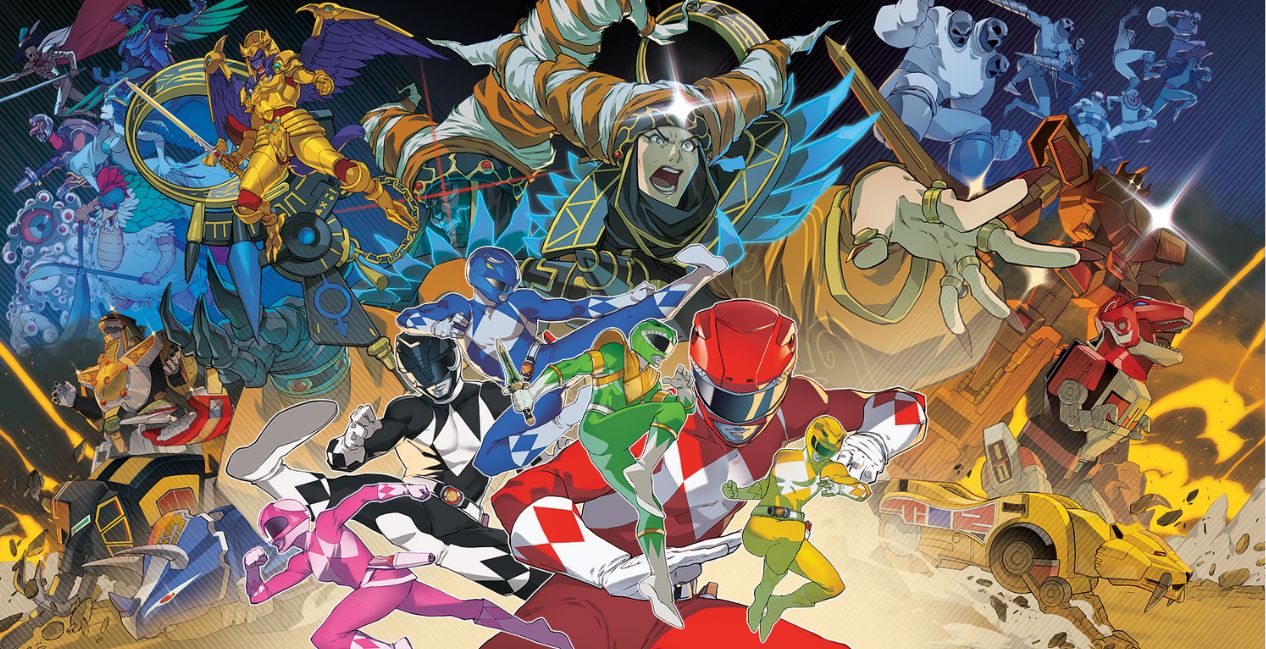
Mighty Morphin Power Rangers: Rita’s Rewind is more than just a game- it’s an experience that bridges nostalgia and discovery. While playing the game, I was with someone who had never really engaged with Power Rangers or arcade brawlers. Yet, by the time we were done, we went straight into a Power Rangers binge-watching Mighty Morphin Power Rangers movie from 2017, the original Mighty Morphin Power Rangers, and even diving into the Super Sentai series to explore the franchise’s roots. That’s the kind of impact Rita’s Rewind has. It doesn’t just remind longtime fans of the past; it invites new audiences to embrace everything that makes Power Rangers timeless.
The game’s blend of accessible co-op, thoughtful character details, and electrifying gameplay creates an experience that anyone can enjoy, whether they’re new to Power Rangers or lifelong fans. With couch co-op for up to 6 players on select platforms and plans to expand online multiplayer post-launch, it offers the perfect mix of modern and retro gaming fun. It’s a game that encourages connection, teamwork, and pure joy – values that have been at the heart of Power Rangers since the beginning.
Rita’s Rewind isn’t just a love letter to the franchise; it’s a celebration of its legacy and a call to share that legacy with a new generation. Whether you’re reliving your childhood or discovering the Power Rangers universe for the first time, Rita’s Rewind offers an exciting, nostalgic, and deeply fun experience that proves the Power Rangers’ ideals of unity, courage, and kindness are as relevant as ever.
Mighty Morphin Power Rangers: Rita’s Rewind will be available digitally on December 10, 2024, for Nintendo Switch, PlayStation 4, PlayStation 5, Xbox One, Xbox Series X|S, and PC via Steam.
Local multiplayer supports up to 6 players on PC, Switch, and Xbox, and up to 4 players on PlayStation consoles. Online co-op allows up to 2 players, with additional player support planned post-launch.

